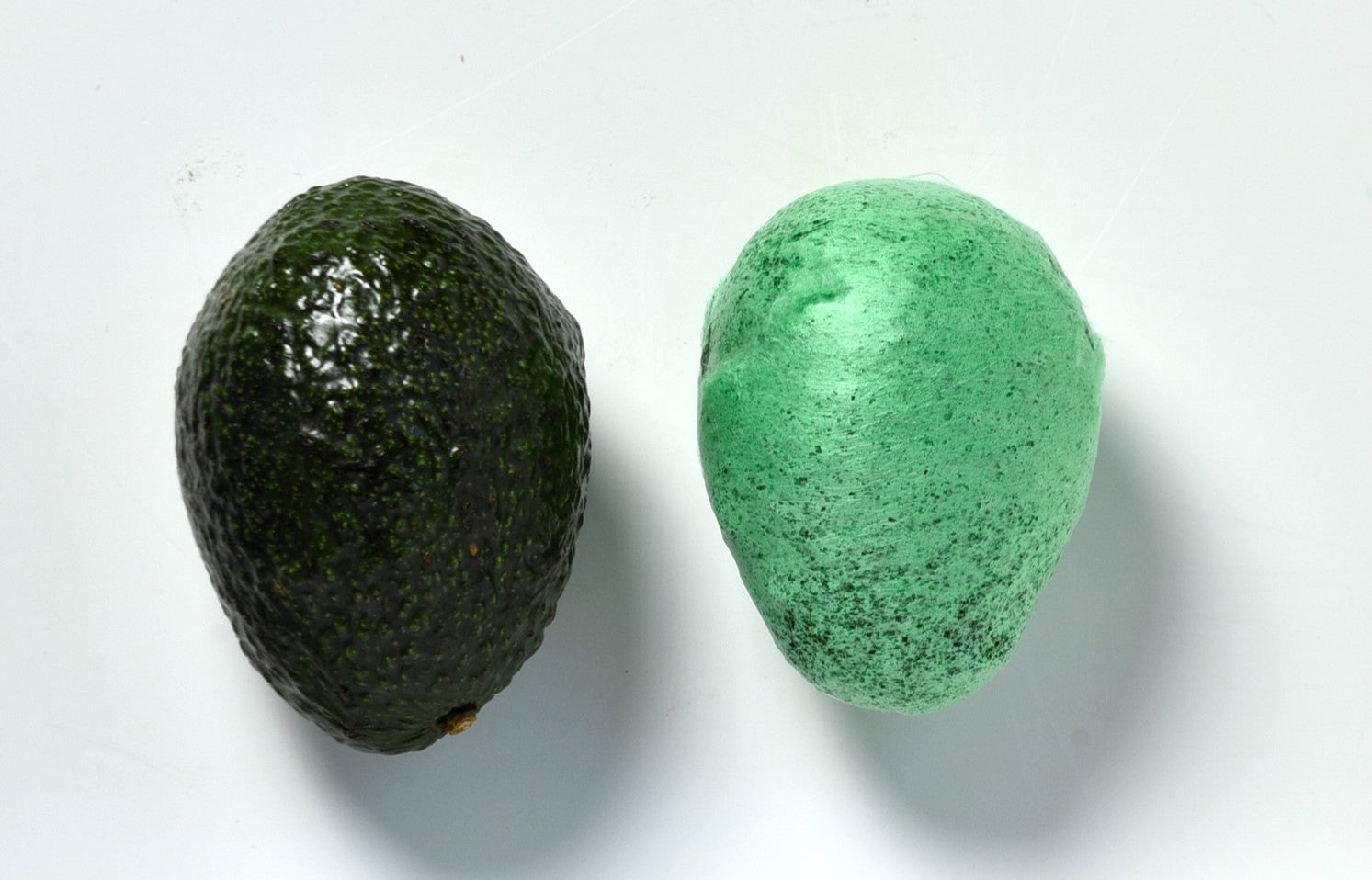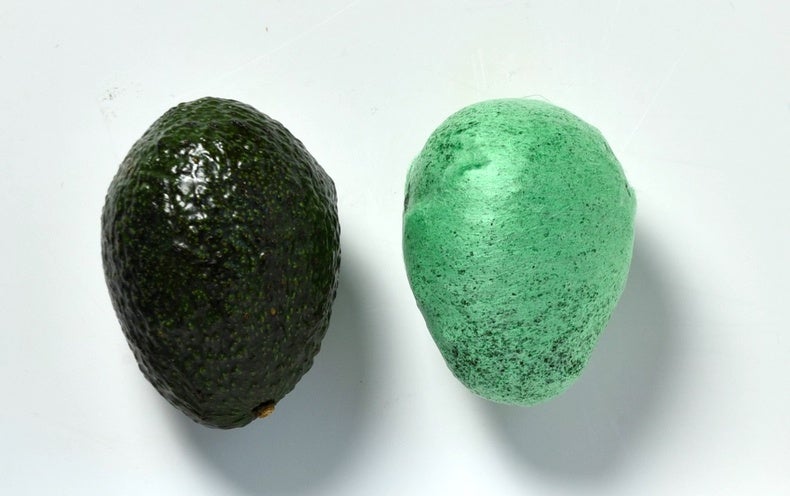
Packaging is essential for preserving and distributing many kinds of foods, but it often incorporates plastic—scraps of which already litter too much of the planet, posing a threat to wildlife and contaminating drinking water and soil. Now researchers say they have developed a nontoxic, biodegradable and antimicrobial food coating that could reduce food waste and foodborne illness without adding plastic to the environment. A new study shows this material can be effectively sprayed on individual pieces of produce, such as fruits or vegetables. Removing it is as simple as rinsing it off with water.
Protecting edible items from bacteria and other microorganisms reduces spoilage, which is a major factor in food being tossed out. And this kind of waste is a root cause of worldwide hunger: every year roughly one third of food produced across the globe goes to waste. That’s not the only reason to shield produce from germs—some microorganisms are also the sources of illnesses, including listeriosis and Escherichia coli poisoning. Foodborne illnesses cause more than 420,000 estimated deaths worldwide annually.
Unfortunately, packing food to preserve it also adds massively to environmental plastic. “Food packaging is definitely enemy number one when it comes to plastic pollution,” says Win Cowger, an environmental scientist at the Moore Institute for Plastic Pollution Research, who was not involved in the new study. “We can see globally that food packaging is the most abundant plastic material in the environment.” Although the new coating would only replace a portion of the packaging out there—it would not touch some of the greatest offenders, such as water bottles and coffee cup lids—Cowger says any step toward reducing plastic pollution is a good one.
Plastics can stick around in the environment for a long time—potentially forever—but the new coating is biodegradable. That’s because of its primary ingredient: pullulan, an edible fiber that is “generally recognized as safe” (GRAS) by the U.S. Food and Drug Administration. The coating also incorporates the naturally derived antimicrobial agents citric acid and thyme oil, as well as a bacterially produced compound called nisin, all of which are widely deemed safe for human consumption in the amounts involved. It is described in a new study published this week in Nature Food.
The study researchers used a manufacturing system called focused rotary jet spinning, or FRJS, to generate antimicrobial-laced fibers and apply them to food. Harvard University bioengineer and study co-author Huibin Chang compares the FRJS system to a cotton candy machine, which rapidly spins melted sugar to drive it through small holes, producing fine strands that can be wrapped around a paper cone. FRJS also creates a focused stream of gossamer fibers (made of pullulan in this case rather than flavored sugar) that can be wrapped around a food item—an avocado, for instance. But FRJS—developed in study co-author and bioengineer Kit Parker’s Harvard lab, where Chang is a researcher—was not originally designed for food applications. “When we created this technology, we used it for tissue engineering,” Chang says. For example, he explains, FRJS played a role in his previous work building three-dimensional models of certain heart structures.
The researchers tested the coating on avocados because these fruits are especially prone to uneven ripening and postharvest decay. After being deposited on an avocado via FRJS, the nontoxic pullulan coating could be easily rinsed off in a sink and washed down the drain, the study found. “You can package the avocado at the farm and extend the shelf life, and then you can wash the coating away,” says study co-author Philip Demokritou, a nanoaerosol researcher at Rutgers University and Harvard. Even if the treated object itself is discarded, its coating will degrade in soil in about three days, according to the scientists.
The team also tested how much the coating improved food safety. When the researchers pitted it against common foodborne pathogens, including E. coli, Listeria innocua and Aspergillus fumigatus, they saw a reduction in both bacterial and fungal populations. They also found that avocados with the coating were less likely to rot: just 50 percent of these fruits went bad over the course of a week, compared with 90 percent of the uncoated produce. And the coated avocados were more likely to retain their green internal color.
Although this is not the first antimicrobial food coating, the researchers believe they have created the most effective and easily disposed of option to date. They contend that the spray-on technology requires less starting material, making it more efficient than silk-fiber-based coatings, which require that food first be dipped in the material and then dried. Other attempts at plastic-free food packaging have involved cellulose-based films; these cannot be rinsed off and some even need to be recycled.
The team is currently working on scaling up the coating process to treat multiple pieces of produce at once, Chang says. The scientists are considering several options, including an assembly-line-based system, but this is still in the early stages of planning.
The coating may also need to undergo further safety testing, suggests Nishad Jayasundara, an environmental toxicologist at Duke University, who was not involved with the study. “As a toxicologist,” he says, “the primary thought whenever you see a newly synthesized product is ‘Do we know enough about it?’” For instance, although the coating’s starting materials are nontoxic, washing them down the drain could make them break down into unexpected by-products.
Jayasundara says he is generally encouraged by the new study results. “It’s always very exciting when you have biodegradable material that can replace or reduce plastics at any level possible,” he says. But he is hesitant to celebrate just yet. Although the FDA has given pullulan the agency’s GRAS designation, Jayasundara cautions that whenever there are modifications to a material—even with natural additives such as the antimicrobials the researchers used—it is important to evaluate their safety to human health using a range of tests.
“When we first thought about plastics, they were deemed pretty safe molecules,” Jayasundara notes. “But over time we realized, ‘Oh, actually, no, that’s not the case.’ Now we know that plastics at all levels, regardless of the size, have cellular-level effects, molecular-level effects and ecosystem-level effects.”

